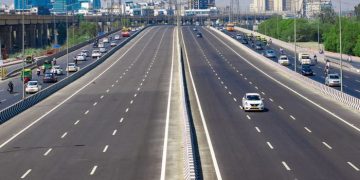The government has confirmed that motorists unwilling to pay the Sh8 per kilometre toll on the upcoming Rironi-Mau Summit expressway will have access to free alternative routes. The project, spanning 175km from Rironi to Mau Summit, is set to be built and operated by a Chinese-backed consortium comprising the China Road and Bridge Corporation (CRBC) and the National Social Security Fund (NSSF), with operations expected to begin in 2028.
To ensure motorists retain travel choices, the current A8 road will remain available as a toll-free alternative. However, increased congestion is anticipated on this route, as the expressway is expected to attract paying users seeking a faster and more modern travel experience. Additionally, the parallel A8 South route from Rironi to Naivasha, measuring approximately 56.8km, will be upgraded to a dual carriageway while remaining toll-free, providing budget-conscious travelers with another option.
The expressway will feature an open tolling system with eight stations along the route, while the Maai Mahiu stretch will have two stations for those opting to pay. The base toll for passenger cars and 4WD vehicles is set at Sh8 per kilometre, with a modest annual increase of one percent, offering a more gradual escalation compared to competing bids.
Motorists using the toll road will benefit from modern safety features, traffic management systems for fog-prone areas, improved drainage, enhanced lighting, and a 4.5km viaduct through Nakuru town to reduce urban congestion. The dual four- to six-lane carriageway is expected to cut travel time by hours during peak periods, addressing the chronic gridlock that has plagued the corridor.
The project, valued at Sh180 billion, will operate under a 30-year concession, with the consortium assuming all traffic and revenue risks. This arrangement ensures that financial risks are borne by private investors rather than taxpayers, even if fewer motorists choose the toll route.
Economists have described the dual-option approach as a balanced solution, enabling wealthier motorists and commercial operators to pay for premium services while maintaining free access for all citizens. Before construction begins in 2026, the consortium must complete environmental assessments, provide detailed cost breakdowns, and demonstrate integration of the free alternative routes into the overall transport network.
The project is also expected to create local employment, promote sustainable small businesses, and provide training to upskill workers. Negotiations are ongoing regarding taxes, toll enforcement, land compensation, and other operational protocols to ensure smooth implementation of one of East Africa’s busiest transport corridors.

